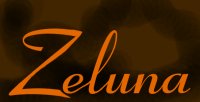
Russian Fairy Tale and Folklore
THE SHROUD
A Russian Folktale and Ghost Story
In a certain village there was a girl who was lazy and slothful,
hated working but would gossip and chatter away like anything.
Well, she took it into her head to invite the other girls to a spinning
party. For in the villages, as every one knows, it is the
lazybones who gives the spinning-feast, and the sweet-toothed
are those who go to it.
Well, on the appointed night she got her spinners together.
They span for her, and she fed them and feasted them. Among
other things they chatted about was this--which of them all was
the boldest?
Says the lazybones (_lezhaka_):
"I'm not afraid of anything!"
"Well then," say the spinners, "if you're not afraid, go
past the graveyard to the church, take down the holy picture
from the door, and bring it here."
"Good, I'll bring it; only each of you must spin me a distaff-ful."
That was just her sort of notion: to do nothing herself, but
to get others to do it for her. Well, she went, took down the
picture, and brought it home with her. Her friends all saw that
sure enough it was the picture from the church. But the picture
had to be taken back again, and it was now the midnight hour.
Who was to take it? At length the lazybones said:
"You girls go on spinning. I'll take it back myself. I'm
not afraid of anything!"
So she went and put the picture back in its place. As she
was passing the graveyard on her return, she saw a corpse in a
white shroud, seated on a tomb. It was a moonlight night;
everything was visible. She went up to the corpse, and drew
away its shroud from it. The corpse held its peace, not uttering
a word; no doubt the time for it to speak had not come yet.
Well, she took the shroud and went home.
"There!" says she, "I've taken back the picture and put
it in its place; and, what's more, here's a shroud I took away
from a corpse."
Some of the girls were horrified; others didn't believe what
she said, and laughed at her.
But after they had supped and lain down to sleep, all of a
sudden the corpse tapped at the window and said:
"Give me my shroud! Give me my shroud!"
The girls were so frightened they didn't know whether they
were alive or dead. But the lazybones took the shroud, went to
the window, opened it, and said:
"There, take it."
"No," replied the corpse, "restore it to the place you took
it from."
Just then the cocks suddenly began to crow. The corpse
disappeared.
Next night, when the spinners had all gone home to their
own houses, at the very same hour as before, the corpse came,
tapped at the window, and cried:
"Give me my shroud!"
Well, the girl's father and mother opened the window and
offered him his shroud.
"No," says he, "let her take it back to the place she took
it from."
"Really now, how could one go to a graveyard with a corpse?
What a horrible idea!" she replied.
Just then the cocks crew. The corpse disappeared.
Next day the girl's father and mother sent for the priest,
told him the whole story, and entreated him to help them in their
trouble.
"Couldn't a service[405] be performed?" they said.
The priest reflected awhile; then he replied:
"Please to tell her to come to church to-morrow."
Next day the lazybones went to church. The service began,
numbers of people came to it. But just as they were going
to sing the cherubim song,[406] there suddenly arose, goodness
knows whence, so terrible a whirlwind that all the congregation
fell flat on their faces. And it caught up that girl, and then flung
her down on the ground. The girl disappeared from sight;
nothing was left of her but her back hair.[407]
They are generally the corpses of wizards, or of other sinners who
have led specially unholy lives, which leave their graves by night and
wander abroad. Into such bodies, it is held, demons enter, and the
combination of fiend and corpse goes forth as the terrible Vampire
thirsting for blood. Of the proceedings of such a being the next story
gives a detailed account, from which, among other things, may be
learnt the fact that Slavonic corpses attach great importance to their
coffin-lids as well as to their shrouds.